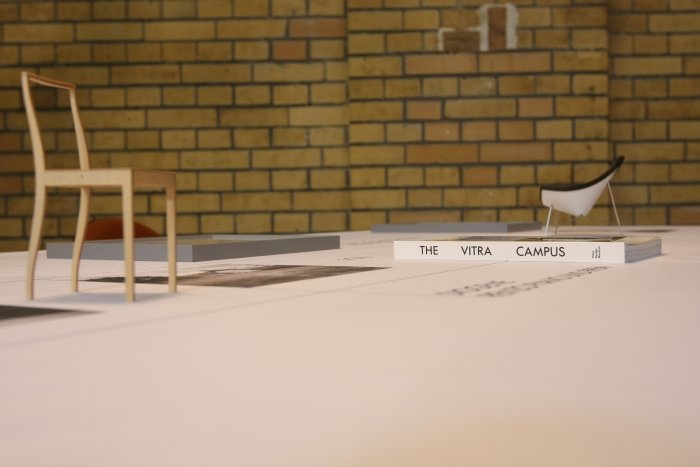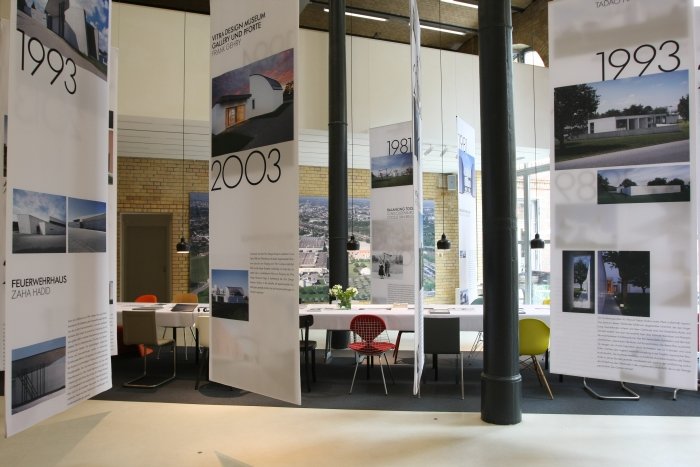Architecture | Artek | Exhibitions and Shows | Producer | smow | Vitra | Weil am Rhein
1989. A year of social, culture and political upheaval whose effects are still being felt today. The Berlin Wall falls. George Bush is sworn in as 41st President of the United States of America. Nirvana release their debut album Bleach. The Poll Tax is introduced in Scotland. The first episode of The Simpsons airs. And while not wanting to over dramatise the situation, yet clearly and deliberately doing just that in the interests of an introduction, 1989 also saw the opening of the Vitra Design Museum in Weil am Rhein, an institution that has not only gone on to produce numerous critically acclaimed exhibitions devoted to design and popular culture, but is and was the building that marks the, effective, origins of the Vitra Campus and so Vitra's transformation from a furniture manufacturer to a curator of contemporary architecture and design.
In November 2013 the Vitra Design Museum marked the approaching anniversary with the publication of "The Vitra Campus – Architecture Design Industry", and that book has now, more or less, been transformed into an exhibition at the Berlin architecture gallery Aedes am Pfefferberg.

Conceived by Aedes and designed by Chris Rehberger from Berlin agency Double Standards, who was also responsible for the design of the original book, Architektur Design Industrie presents a compact overview of the objects and buildings to be found on the Vitra Campus in addition to video interviews with the architects responsible and catalogues from selected Vitra Design Museum exhibitions. By no stretch of the imagination a particularly academic, technical or overly critical exhibition, Architektur Design Industrie is a very accessible, clearly designed and open presentation that provides both the necessary background information to allow visitors to understand what the Vitra Campus is and more detailed information to allow those wanting to know more to do just that.
According to outgoing Vitra CEO Rolf Fehlbaum the Vitra Campus grew organically, without any long-term master plan. By his own admission following the infamous 1981 fire that destroyed the original Vitra production facility in Weil am Rhein he initially intended to redevelop the site in cooperation with just one architect, namely Nicholas Grimshaw. However having got to know Frank Gehry and then commissioning him to build both the Vitra Design Museum and a production hall he found himself confronted in the form of Gehry's production hall and Grimshaw's production hall by two buildings next to each other which although similar in terms of size, cost and function, were completely different. And thus illustrated the varied possibilities of architecture in a simple, accessible way and so inspired him to undertake a journey that has led to buildings from the likes of Zaha Hadid, Álvaro Siza or Renzo Piano. With the commissioning of the sculpture Balancing Tools from Claes Oldenburg and Coosje van Bruggen in 1984 the Vitra Campus not only acquired its first work of art but also the first object outwith the production area, and thus the first publicly accessible object. Following the opening of Gehry's Museum building the "public" area of the Vitra Campus was extended first in 1993 with Tadao Ando's conference pavilion and laterally through Herzog & de Meuron's VitraHaus, thus creating the current mix of public and industrial spaces. A mix beautifully celebrated and illustrated by the two most recent additions to the Vitra Campus, the SANAA factory building - a sober, functional, if monumental construction - and the Vitra Slide Tower.

Originating from a discussion between Aedes and the Vitra Design Museum the decision to host Architektur Design Industrie at Aedes Berlin is very apposite, for in 1989 Aedes published the first monograph on Frank Gehry's then brand new Vitra Design Museum building, and so it is fitting that they should be hosting the "anniversary exhibition", as we really don't want to call it but somehow feel a deep need to.
According to Vitra Design Museum Chief Curator Mateo Kries Architektur Design Industrie is currently only intended as being a one-off presentation at Aedes. For our money however transforming it into a touring exhibition is not only possible, but an all but guaranteed certainty. Perfect as it is in form and content for use as an in-store exhibition in Vitra's global flagship store and dealer network.
Which, unavoidably and inevitably, brings us to the obvious question concerning Architektur Design Industrie: Yes, at times it does look like a sales pitch for Vitra - and indeed Artek if one considers the lighting. However, removing all the more commercial references to Vitra would have been a little weird, and somehow made Vitra more present: just as with those deceased Roman citizens who falling into disgrace post death had their faces removed from statues, thus encouraging questions as to who they were and why they had no face. Thus ensuring their eternal fame. The Vitra Campus and the Vitra Design Museum arose from Vitra, filling the exhibition space with furniture by other manufactures would be perverse.
OK one could do without the chairs from the Vitra Design Museum miniatures collection which are also on display, that is a little unnecessary, not least because only Vitra miniatures are on display although the miniatures collection is a wonderfully independent and democratic reflection of the history of furniture design. And the Vitra Home Collection catalogue on the main table, one could do without that, being as it is a little too blatant and not in any way part of the subject in hand.
That said, Architektur Design Industrie is firmly about the Vitra Campus and the Vitra Design Museum, and ultimately we assume most visitors will be able to rise above the visual semantics and enjoy it for what it is.
On a more general note of criticism the exhibition texts are only in German. We know why that is, understand why that is, accept why that is. But still feel it a touch limiting, that some form of translation would help make the exhibition more inclusive. Especially in a global city like Berlin where German is in many ways the unofficial second language.
Such criticism aside Architektur Design Industrie remains an engaging introduction to a genuinely fascinating location and one which reminds us that despite Public Enemy's protestations to the contrary, 1989 was not just "another summer"
Architektur Design Industrie - Vitra Campus. Ein Jubiläum runs at Aedes am Pfefferberg, Christinenstrasse 18-19, 10119 Berlin until Sunday September 28th.
Further details can be found at www.aedes-arc.de